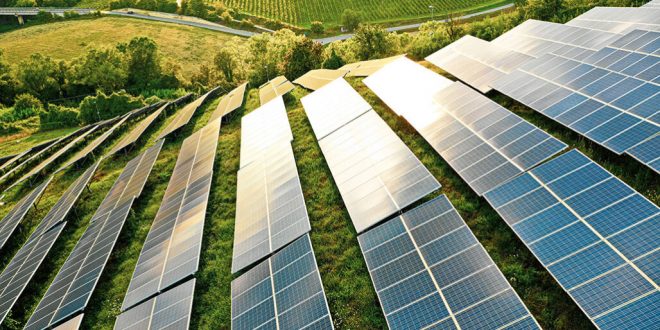India is on track to install an additional 4,580MW of solar capacity in the second half of 2021 after seeing deployment marginally increase in Q2, according to Bridge to India.
Despite fears of a third wave of the coronavirus pandemic, the research and consultancy firm estimates that India will add 2,130MW and 2,450MW of solar PV capacity in Q3 and Q4, respectively.
Having deployed 2,105MW in Q1, India went on to install 2,110MW in the second quarter as utility-scale additions remained steady in spite of lockdowns across the country. As of 30 June, India’s total installed solar capacity was 46,130MW, Bridge to India said in its latest Solar Compass report.
Utility-scale plants represented 84% of Q2 additions, while 10% were rooftop systems and 6% off-grid projects. India’s total utility-scale solar pipeline, which includes projects at various stages of development, now stands at around 52.8GW.
While deployments are on the rise, solar tender issuance in Q2 was down 25% on the previous quarter, with 17 utility-scale project tenders aggregating just over 8GW issued, Bridge to India said.
With component prices rising, the consultancy said the total engineering, procurement and construction cost for utility-scale PV plants in Q2 rose to INR32.69/W (US$0.44/W). As a result of rising polysilicon prices, BloombergNEF revealed in June that module prices in India were up 10% since the second half of last year.
In a move to reduce the risk of supply chain disruption across the solar sector, India’s Minister of Power and New and Renewable Energy (MNRE) Raj Kumar Singh recently called for increases in PV manufacturing capacity outside China.
As part of India’s efforts to reduce its reliance on imports, MNRE earlier this year released guidelines for a production-linked incentive scheme that will allocate INR45 billion (US$603 million) over five years to back the domestic development of high-efficiency PV modules, with preference given to manufacturers that plan on setting up fully integrated solar manufacturing plants.
In addition to a 20% duty on inverters that came into effect in February, India will also levy a 40% basic customs duty on solar modules and 25% duty on cells as of April 2022.
India has seen a rise in manufacturing announcements in recent months, with Vikram Solar inaugurating a 1.3GW module facility in Tamil Nadu and US thin film manufacturer First Solar unveiling plans for a 3.3GWdc module plant in the country in July, adding to plans from US-based wafer producer 1366 Technologies, which intends to invest US$300 million to establish a 2GW wafer and cell facility.
In an interview with PV Tech earlier this year, Bridge to India managing director Vinay Rustagi said he expects India to have around 65GW of installed solar capacity by the end of 2022, meaning the country will fall short of its target of deploying 100GW of solar by then.

 Iran Energy News Oil, Gas, Petrochemical and Energy Field Specialized Channel
Iran Energy News Oil, Gas, Petrochemical and Energy Field Specialized Channel



